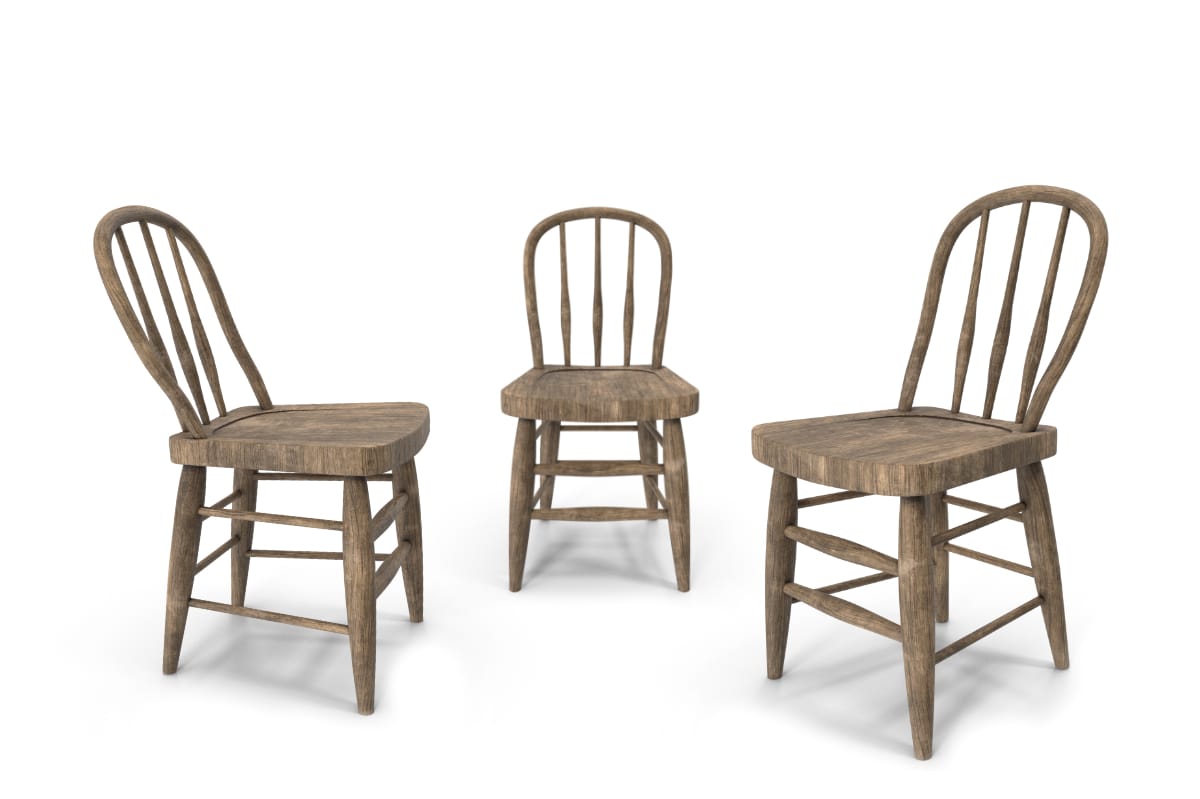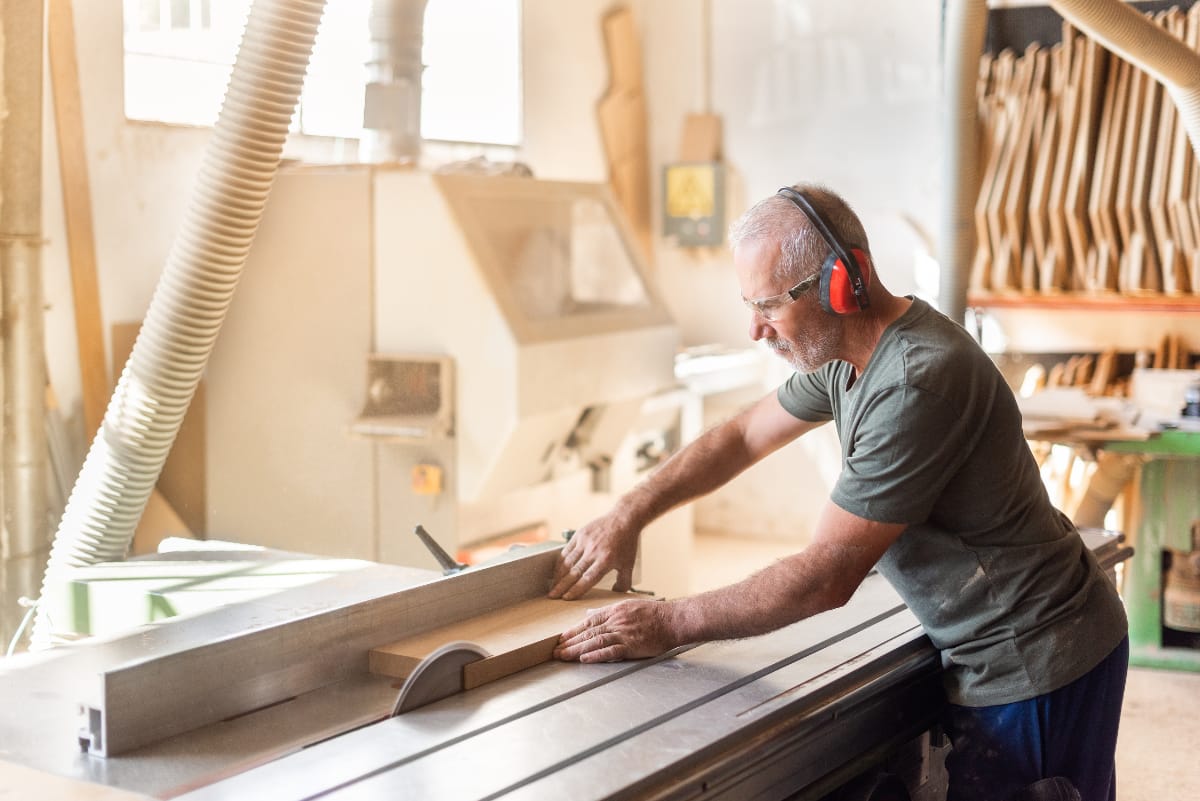Practical methods to fix the common wobbly chair.
As chairs are the most abused piece of furniture in any home or workplace, they usually need to be repaired more often then anything else. If you can master re-gluing chairs you'll save yourself and your customers a fortune by bringing back to life a solid piece of old furniture.
Chair Joinery
There are two primary types of joinery used in straight-backed chair construction: mortise-and-tenon or dowels. Mortise-and-tenon joinery is pre-industrial, though many woodworkers and very few factories still use it to join legs and rails. Dowels are machine age because the dowels themselves are machined.
See Allwood's stock of tenoners machines:
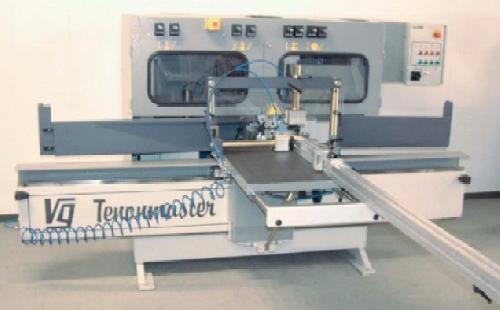
Dowel joinery is easier and faster to cut than mortise and tenon. However, doweled joints don't have nearly as much glue surface, side-grain-to-side-grain, so these joints don't hold up as well.
As most chairs made since the mid-19th century are doweled, which don't hold up as well as mortise-and-tenon joinery, the chairs you are likely to come up against that need to be re-glued are probably going to be dowelled. So this article is going to cover doweled chairs only.
Below you can see examples of mortise and dowel joinery.
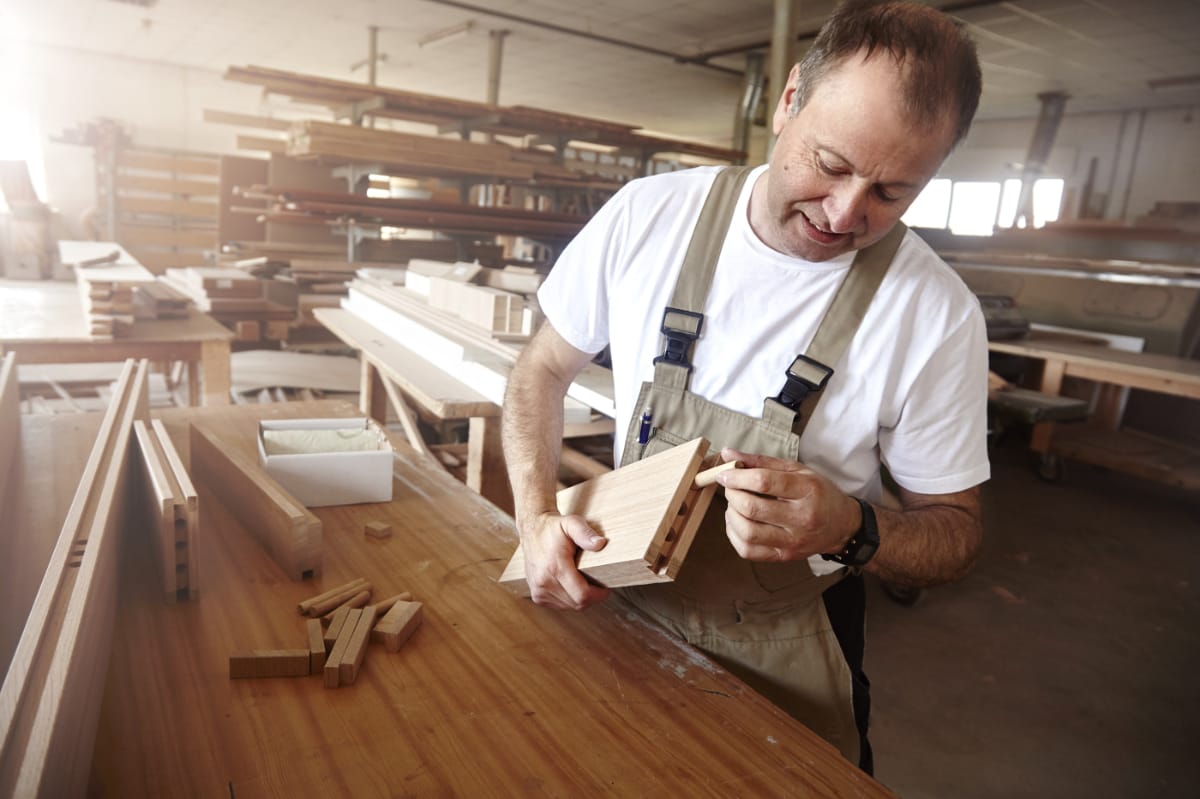
Dowel Joinery
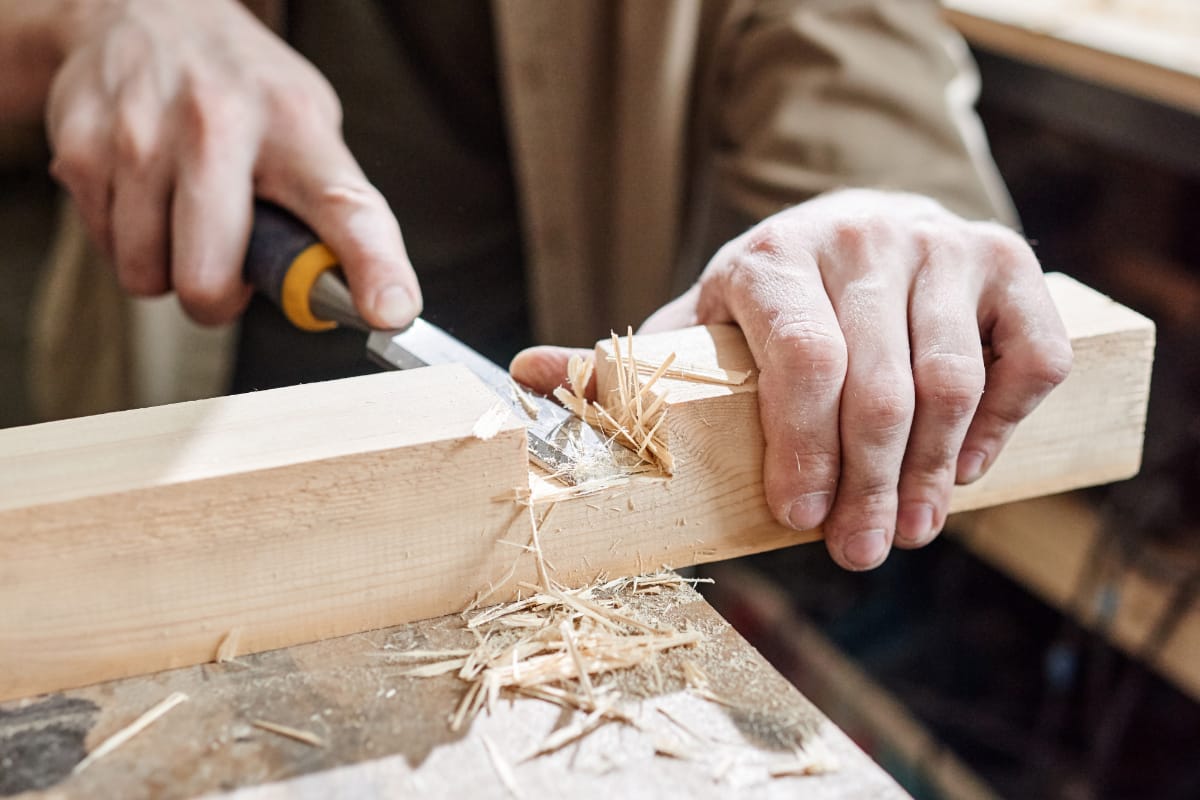
Cutting mortise in wood
Philosophy of Re-gluing
Trying to re-glue or tighten chairs by inserting some sort of adhesive into the joints, to avoid having to take the chair apart isn't going to cut it. If you want to do a job once, then do it well, there is no quick fix you have to take the chair apart, clean, prepare, and glue it with new dowels to have a chair that will last another decade or two.
There are going to be those chairs that resist separation. You'll have to decide if you can repair the rest of the chair without detaching the stubborn part hoping that it will hold its strength as long as the other joints are being re-glued, or figure out a way of getting them apart.
Determining glue used
Find out which glue has been used to determine how much work is needed to remove the old stuff. Rub some water or saliva into the glue, if it becomes sticky then it's likely to be animal hide glue. You can usually get the joints apart by inserting denatured alcohol. If the joint is held together with white or yellow glue, epoxy, polyurethane or urea-formaldehyde (plastic-resin) you may not be able to get them loose if they aren't already. You may have to work around them. They can be soaked in hot water, or add white vinegar to speed up the process, but the glue may also need to be scraped off.
Knocking joints apart
Your next option is to knock the joint apart.
The first step in re-gluing a loose chair is to knock it apart. Before you do this, remove the corner blocks and any nails or other restraining devices that have been inserted.
It is the glue holding the chair joints tight, not the corner blocks, nails, screws or metal brackets applied during manufacturing or restoration. They simply keep the joints from coming apart but they don't keep joints from becoming loose.
Often chair repairs are done by adding metal devices that do very little but making re-gluing more difficult because they have to be removed. These devices can cause serious damage, including split and breaks that are sometimes difficult to repair. So think twice before adding them.
Nails are often inserted into stretcher joints in factory-made chairs. The only efficient way to remove them is to dig them out. Dig out some of the wood on two sides of the nail using a 1/8 inch chisel (it doesn't need to be sharp). With enough wood removed a pair of electrician's side-cutting pliers should be able to pry them out of the wood. Fill the damage with wood putty if you are refinishing, if not use a matching coloured wax crayon after the chair has been reassembled.
Sometimes you can knock the joints apart with just the right amount of force to cause the nails to bend. But there is a risk to breaking or splitting something. If you want a good finish, then remove the nails first.
Next try knocking the corner blocks loose with a hammer. Use something that won't cause damage to the wood, mallets usually come with soft heads, like plastic, rubber or leather. If you only have a metal hammer, be sure to cushion the blows with leather or softwood blocks because you will dent the wood otherwise. Also use blankets on your work surface to prevent damage to the rest of the chair.
If they resist then use a syringe to put denatured alcohol into the joint. The syringe is a handy tool as it helps to get the alcohol right to where you need it. If denatured alcohol doesn't work, try white vinegar.
Alcohol can cause the finish to turn white. If you aren't refinishing the chair, you can remove this by rubbing with ultra fine (#0000) steel wool. It's always best to do the re-gluing before stripping and refinishing, not after. You'll only end up getting glue on bare wood or damage a newly applied finish.
As you disassemble the chair, keep track of the parts so you can reassemble them correctly. You can either number or letter the parts directly on the part or on a piece of tape attached to each part. Or lay them out on a table in the order they will be reassembled.
Preparing the joints
Now the parts are separated, you can prepare each joint for re-gluing. Each part must be cleaned properly to achieve a tight wood-to-wood contact when reassembled. To re-glue, you must remove all of the old glue first.
There is an exception to this rule, if animal hide glue has been used. You can apply hot animal hide glue over old hide glue. The heat and the wetness will dissolve and mix with the old glue. It's a great time saving glue as it removes the task of having to clean glue off the joints.
But hot hide glue requires effort to prepare and takes practice to learn how to use. This article is based on using white or yellow glue. So you will need to remove the old glue.
You may also have to replace some of the dowels.
A basic rule of joinery is that wood bonds well side-grain-to-side-grain and poorly end-grain-to-end-grain or side-grain-to-end-grain. This is why corner blocks can't be counted on to strengthen joints as the blocks are cut on a 45 degree angle.
Dowels inserted parallel in rails are 100 percent side-grain-to-side-grain while dowels inserted perpendicularly into legs are in contact with end grain on two sides, top and bottom. The leg side of the dowel is therefore weaker than the rail side, thus the dowels usually separate from the leg long before the rail. Because of this you can leave your dowels attached to the rails and hope they remain strong. If you don't want to take a chance replace all dowels including the ones in the rails.
Whatever you decide to do, you can't compromise on cleaning off the old glue, including from inside the holes, before re-gluing the chair. You can either scrape the glue off or dissolve and wash it off. If you scrape the glue off, the likelihood is you'll also take some of the wood with it.
You can break down yellow and white glue by soaking in hot water. You can add vinegar to the water to accelerate the process a little. Other adhesives will have to be scraped, but try to remove as little wood as possible.
Replacing dowels
Remove the old dowels first, this can be done by striking the ends with a hammer, or twisting them with pliers to break the glue bond. Pull them out using pliers.
If they won't budge, secure the part you are working on in a clamped vice, saw off the dowel about 1/16 inch above the surface. Then, using a brad-point drill bit 1/16 inch smaller in diameter than the dowel, drill down the centre of the dowel until you reach the air pocket at the bottom. You will know when you have hit the air pocket as you will feel a slight give. It's usually easy to separate the remaining part of the dowel from the original drilled hole using a 1/8 inch chisel with a relatively dull edge.
Once all the dowel pieces have been removed, clean the hole by drilling out any remaining dowel parts using a twist drill bit the same diameter as the hole. You can then scrub the hole with hot water or scrape using a needle-nose rasp which can be quicker.
Assembling
Now for the easy part, gluing and assembling. First the back (if necessary), then the front legs and rail, and finally join these together simultaneously with the side rails and stretchers.
Make sure the new dowels are not too long. Use callipers or matchsticks to determine the depth of the holes. Add the lengths of the two corresponding holes and either trim the dowels to size or drill the holes in the rail deeper to accommodate the length.
The best dowels are spiral-grooved as they give you more wood surface for the glue so they hold better then straight-grooved dowels.
The dowels should also be chamfered (cut away a right-angled edge to make a symmetrical sloping edge (bevel edged)). You can do this yourself by using a rasp, chisel, large pencil sharpener or sandpaper, ideally attached to some type of sanding machine.
Insert new dowels into the rails first (parallel parts before the perpendicular parts).
You may need to trim the dowels to the proper length before inserting them into the legs. All surfaces should be coated with glue. That includes the sides of both the holes and the dowels, have a small container of glue and use a narrow brush to apply the glue.
Make sure when clamping the chair back and chair front, that the parts are squared. You can check this by measuring the diagonals. Measure from the top of one leg to the bottom of the other. The two diagonals should be the same. Keep adjusting the clamps until they line up correctly.
When you clamp the front to the back also make sure all four legs touch a flat surface so the chair doesn't rock. Adjust the clamps if necessary until the chair doesn't rock.
